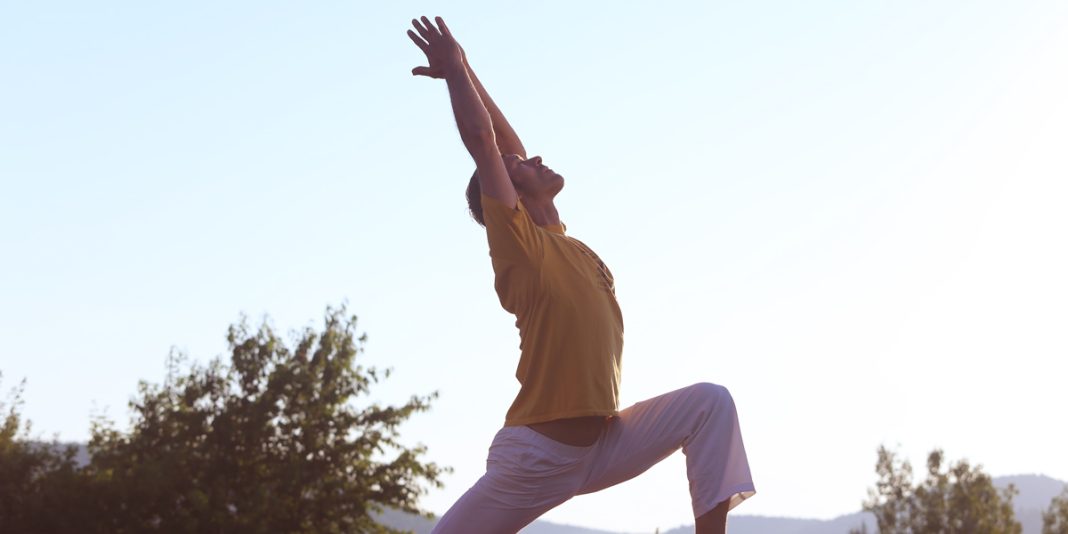In everyday life, among the amazing feats which we perform is standing erect. Although it looks simple, it is as complex as any juggler’s stunt on stage. First, there is a foot with its domed arch. Then the fibula and tibia bones are balanced on the foot. Above it is a heavier bone, the femur or thighbone, with a knob-like end that balances on a still heavier bone, the pelvis. Above the pelvis, twenty four vertebrae are piled, in turn balancing an even weightier structure, the skull. This magnificent framework, the human body, not only stands, but bends, sways, walks and runs.
Standing erect entails balancing of all the above-mentioned parts. To help achieve this balance, the bones are tied together by ligaments. The body is moved and propelled by muscles, which in turn are tied to the supporting structure (the bones) by tendons. There are various joints (or hinges) which permit certain types of movement.
One of the primary goals of asanas is to bring about and maintain maximum flexibility of the body. With proper yoga exercises, the elasticity of the body can be kept even to an advanced age.
Fascia is a band or sheet of connective tissue which attaches, encloses and separates muscles and other internal organs. It is fascia that determines the range of our movements. Each muscle fibre is encased in fascia. Every bundle of muscles, forming a large muscle unit, is also encased in fascia, which extends and forms attachments to the bone. When the fascia takes the form of a large attachment, it is known as a ligament. For posture and balance to be good, the ligaments must be long and elastic. Usually with age comes a tightening and shortening of ligaments. Incorrect posture and balance without proper exercise speeds up this process, rendering the body immobile, often accompanied by discomfort and pain.
The ligaments are extremely tough structures. They consist of multiple layers of connective tissue, parallel bundles of fibres woven in an ingenious way by nature so that they possess great strength. This strength is necessary because of the enormous strain placed upon them by walking, standing and other movements. Ligaments have the quality of contractibility as well as elasticity, like a rubber band. The contractibility phase persists throughout the life span, while the elasticity usually decreases with age.
To begin assessing the relative elasticity of the body, try a simple test. Sit on the edge of a table with knees bent and lower legs hanging down. Allow the arms, the head and trunk to hang loosely in a forward-bend position. Slowly straighten the knees. The trunk will remain bent only up to the point that you begin to feel pain at the knee joints. You will instinctively straighten the spine as you feel tension or pain. This is from the nerve irritation caused by pulling the posterior ligaments of the body. They form a continuous structure from the base of the skull down to the heels.
With advancing biological age, the ligaments tend to become tighter. This ageing process is often speeded up by our lifestyles. For example, those who lead a sedentary lifestyle have a tendency to thrust their head and neck forward. Consequently, the ligament attachments at the base of the skull are shortened, forming a rounded neck. When an erect posture is resumed, the individual may experience pain. As age advances, and elasticity of the ligaments decreases, bending becomes more limited and often painful. The body is being held more tightly by the tightened ligaments—at the base of the skull, throughout the spine, the pelvis, the knees and the heels. They no longer permit ranges of movement which were formerly normal. It should be remembered that the ligamentous structures are continuous. If one part is restricted, the entire attachment is affected. As a result, the general mobility of the body is impeded. A simple analogy can be made with a string tying a package. If the string is too short or if the knot is too tight, the amount of stress and strain is just as great at the point of the knot as at any other point on the string. Though this type of stiffening is normal, it can be kept to a minimum through the practice of yoga asanas. A regular yoga practice promotes good posture and balance, stretching and strengthening all the ligaments of the body.

